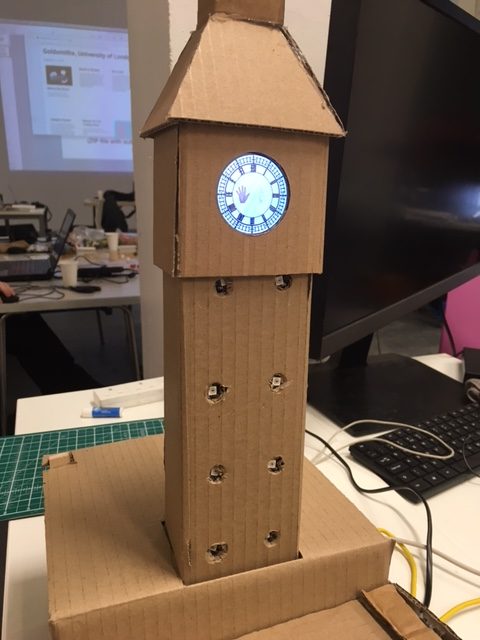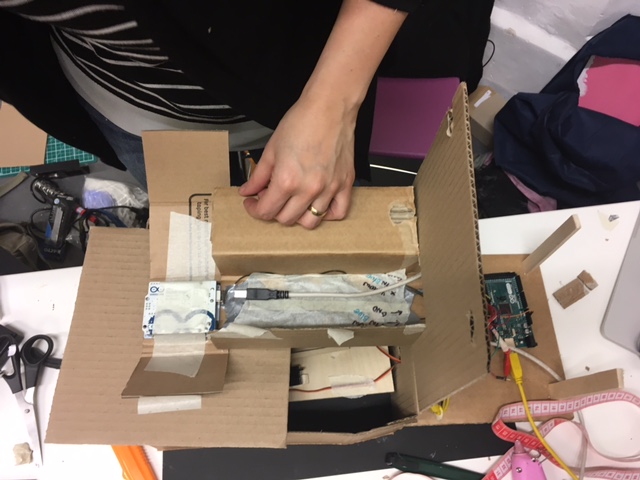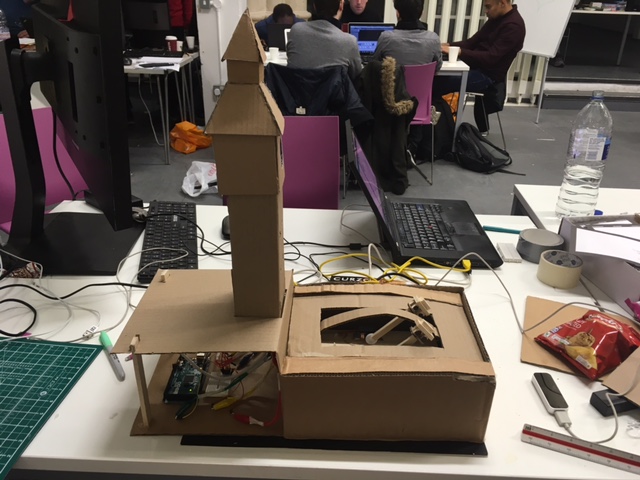Game developer, tinkerer, musician.
© 2025. All rights reserved.
Check out Lilibeth’s Parade source code at https://github.com/chiguire/lilibethsparade
Lilibeth’s Parade is a game made for the Global Game Jam 2017, in Goldsmiths, University of London, London, UK. The jam’s theme was “waves”. Made by Ciro Durán and Yole Quintero.

Inspired by Queen Elizabeth’s iconic salute, we built this gesture as the main mechanic of the game. We interpreted the theme “waves” as a verb rather than a noun.
In Lilibeth’s Parade, two players stand in front of a Leap Motion hand sensor, and must wave as the Queen to make their car progress towards the Westminster Palace Clock Tower. The first player who reaches the tower wins.

The game has the following components:

On the software side, all components are connected through a single Processing sketch. The sketch communicates with the Arduinos through the serial port, and with the Leap Motion sensor through the driver that comes with the Leap Motion SDK. There are Processing binds with the Leap Motion sensor.
During the jam we tried exploring other options, such as using OpenCV and a webcam to detect the hands through skin recognition. After a day of exploring this solution we realised that it would not take us to our desired result on time.